
Developer: Moonloop Games
Publisher: Firestoke
Platform: PC, PS4, PS5, Switch, XBOX Series X/S
Tested on: PC
Hauntii – Review
Released on the 23rd of May in 2024, Hauntii is a slow-burning, twin-stick action shooter. Set in the macabre lands of Eternity, we control a ghost who wants to ascend to heaven. The game promises exploration, collection, and relaxation that would make it the ultimate crowdpleaser as there is something for every kind of gamer. Let us dive in and see if they managed to seamlessly fuse these game styles.
Story
Meet Hauntii, the titular character and the ghost we are controlling. At the beginning of the game, we learn that Hauntii recently passed away. When trying to ascend with an angel, we learn that before we can do so, we have to break our chains. This sends us on our journey to the tower to be able to leave Eternity forever. Throughout this adventure, we learn more of Hauntii’s past while also discovering the mysteries behind Eternity and its denizens.
Graphics
Hauntii has a very unique and ‘simple’ 2D art style that manages to convey most of its story through the art itself. The art has a hand-drawn feel to it which gives the game a ‘visual novel’ type vibe. Besides working with black and lighter colors for contrast, the art still manages to convey a lot of details without cluttering your field of vision. This continues when you walk behind obstacles, as they slowly disintegrate to allow for vision and then reform. This focus on two colors; black and the area color which is usually a pastel, allows for the collectibles and objectives to pop. This focus on visual storytelling seeps its way into the game with visual indicators for skills and how the terrain changes when you stray from the path. These simple graphics work amazingly well with the grim atmosphere and themes in the game to make full use of the ‘less is more’ principle.
Sound
Having a story mostly told through visuals means there’s less sound design in terms of voice lines but it allows for the ambient music to take center stage. And take center stage it did! The ambient music adds to the macabre feeling of being in Eternity as a ghost. It matches and enforces the mood of your current environment and combines with the mood lighting to pull you into the world. This minimalism in sound design works similarly to the graphics to add to the atmosphere of the game.
Gameplay
As a twin-stick shooter, the main philosophy behind the game is simple: you use your two joysticks for most of the important input and you engage enemies with ranged attacks. Hauntii delegates move and shoot to the joysticks, allowing for omnidirectional movement and coverage. This is a nice touch as it allows you full freedom of movement without having to consider firing patterns. The downside of this is that a slight twitch on your finger means your attack might miss the enemy hitbox or you step off the path. This isn’t an infinite shooter, so your attacks can run out. This is indicated by a green spiral on the top left of your screen. This freedom of movement is also relative, as the game encourages you to stay on the illuminated path. Straying from this path will cause eyes to appear all over the darkness until the screen fades to black, you lose a heart, and are teleported back to the lit area you left.
Sticking to simplicity, there are only a few more actions you can take, as there are only a few buttons left after all. You have a limited amount of dashes, which are also indicated on the top left. Besides dashing, the only main action you can take is interacting with objects and NPCs. This is also evident in the story and main flow of the game, as you fight your way through the various world maps in hopes of reaching the point where you can ascend to heaven.
Of course, if this was all there was to the experience, we wouldn’t be talking about this game right now. Hauntii has a special ability which is appropriately called haunting to spice up your gameplay. By repeatedly shooting non-enemies, they will get a counter above them that indicates how close you are to haunting them. When you haunt them, you gain control of the character or object you shot. This way you have all their mobility and you gain special abilities to help you solve puzzles or use them to attack enemies. These special abilities are charged by souls, which are the purple collectibles you find virtually all over the map. Using the special abilities of a haunted creature depletes souls every time you use it. This is important, as haunting doesn’t last forever, so you have to act relatively quickly to make full use of your new form, and while inconvenient, this is a nice twist. This means you cannot just haunt a strong creature and steamroll the area. This also adds a fun dimension of trying out new objects or creatures to see how you can use them best. If you are finished with your haunting or quickly need to return to your base form, you can end it early so you’re not in combat in a form without attacks.
Even though Hauntii is a shooting game, the combat is the least enjoyable part, as with full 360 coverage, enemies can quickly swarm around you and attack while you are still waiting for your essence to replenish so you can start shooting again. The joystick-bound shooting is also prone to slightly missing hitboxes. Luckily through breaking items and haunting random pillars and stones, you can relatively easily replenish your hearts. The combat being less fun doesn’t majorly diminish the enjoyment of the game since it is not a full-time shooter. There are various puzzles and the like that can be solved without needing combat, and if combat is unavoidable, you can also look around to recruit an ally through haunting.
Besides movement and haunting, Hauntii is a collecting game where, besides souls, there are three more things to collect out there. The most common are the game’s equivalent to coins, and they are found a little less commonly than souls but are still everywhere and can also be squeezed from rocks or trees by haunting them. Secondly, we have blue leaves which are a pure collection item and can be gathered through inventive use of your movement and haunting abilities. They also reward revisiting levels, as sometimes the ability needed to reach them isn’t unlocked yet when you pass by them the first time. Revisiting an area is always a good idea to make sure you haven’t missed anything the first time.
Lastly, we have stars. Stars are the items you want to collect the most as they are what allow you to upgrade your abilities and get to know more about Hauntii. You get stars by playing the story but also by clearing puzzles, playing mini-games, and so on. When you’ve collected stars, you can use them at various locations to unlock ‘constellations’. These constellations essentially allow you to get an upgrade piece for either your hearts, your dash, or your essence. You need to attribute multiple constellations to each power before you get a noticeable power-up though. For example, this could mean two heart pieces for an extra heart, and three pieces for both an extra dash and essence spiral. The upgrade system allows you to play exactly the way you want to. The only downside to this system is that unless you upgrade each attribute individually, you can be stuck with base stats for a long time. Luckily stars that you have missed are indicated on the map, so making sure you have all the stars from a given area before moving on is relatively easy.
Conclusion
Hauntii is a masterful example of ‘less is more’ and hides an entrancing story behind a cutesy, simple art style. Despite its macabre central theme of death, the game delivers a satisfying story while also rising above and beyond an ordinary shooter. The best moments of the game do not involve blowing up enemies but involve the story. While some of the game’s elements might make it less enticing to play for a hardcore shooter fan, even then it’s still a very rewarding game. This is an extremely enjoyable game to relax and unwind with.

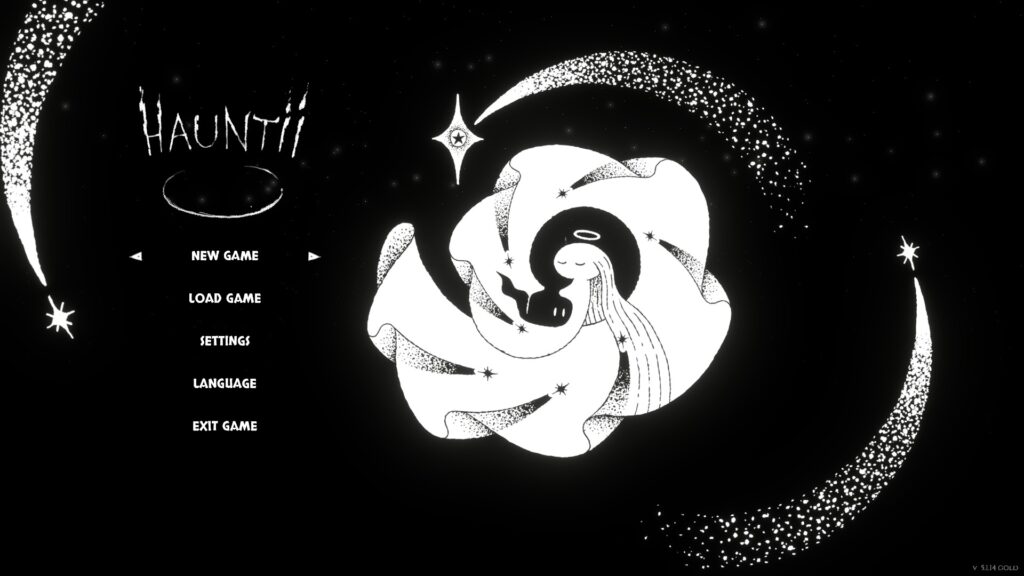
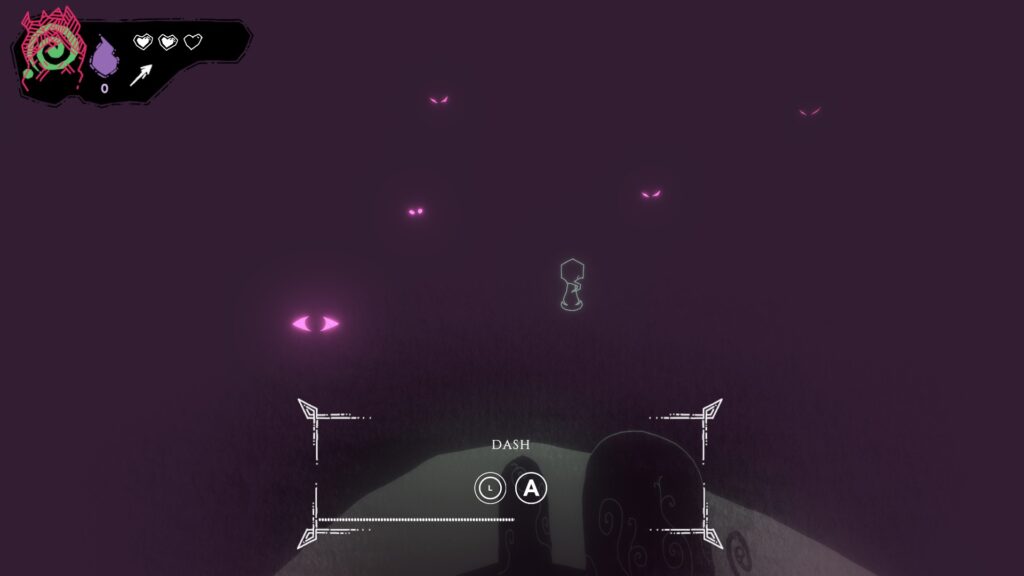
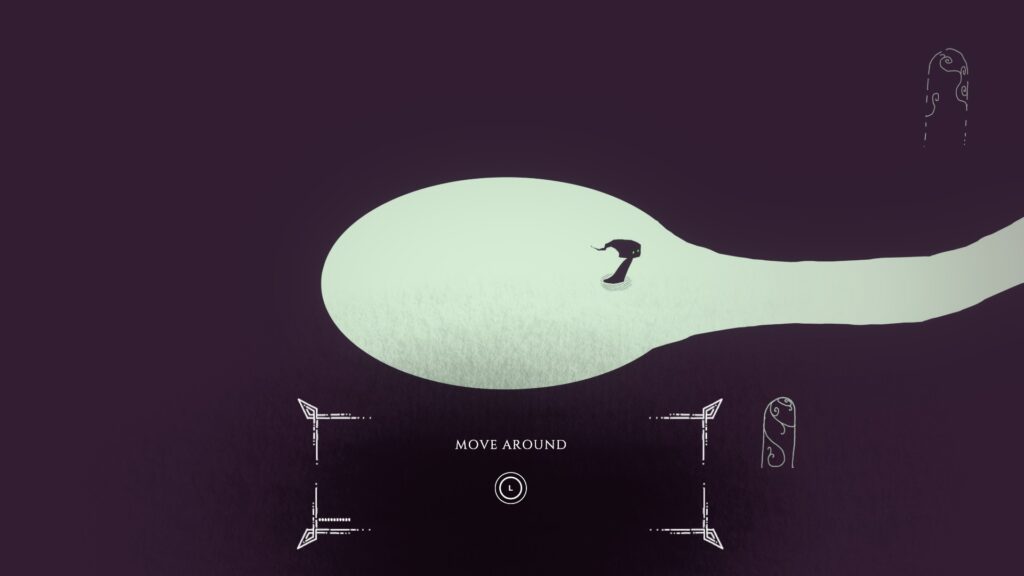
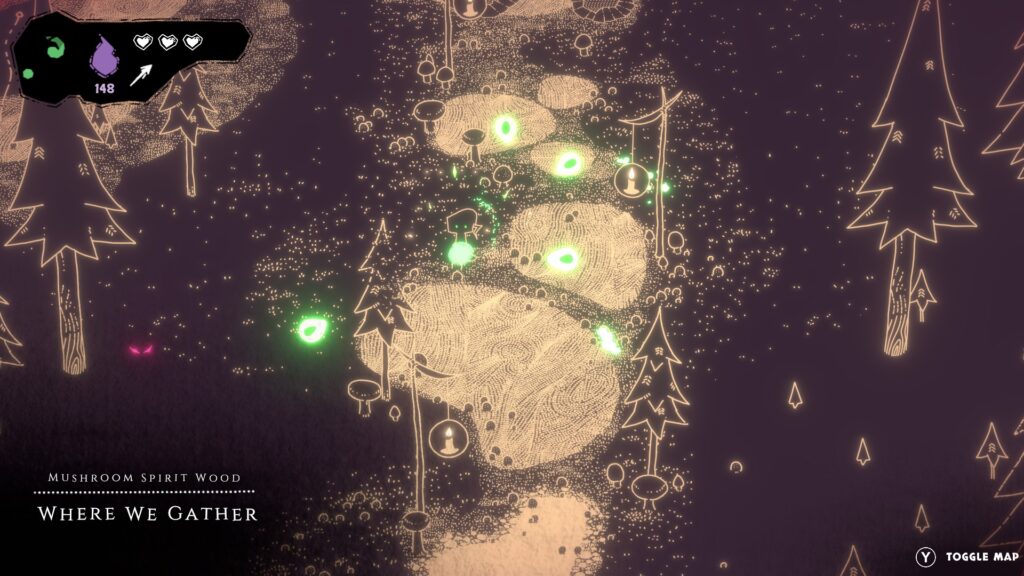
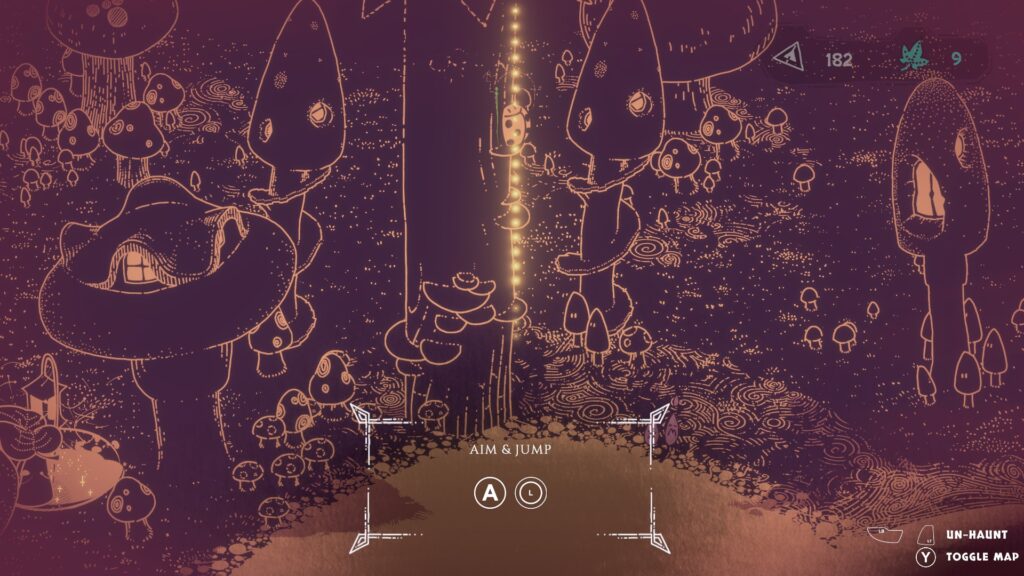
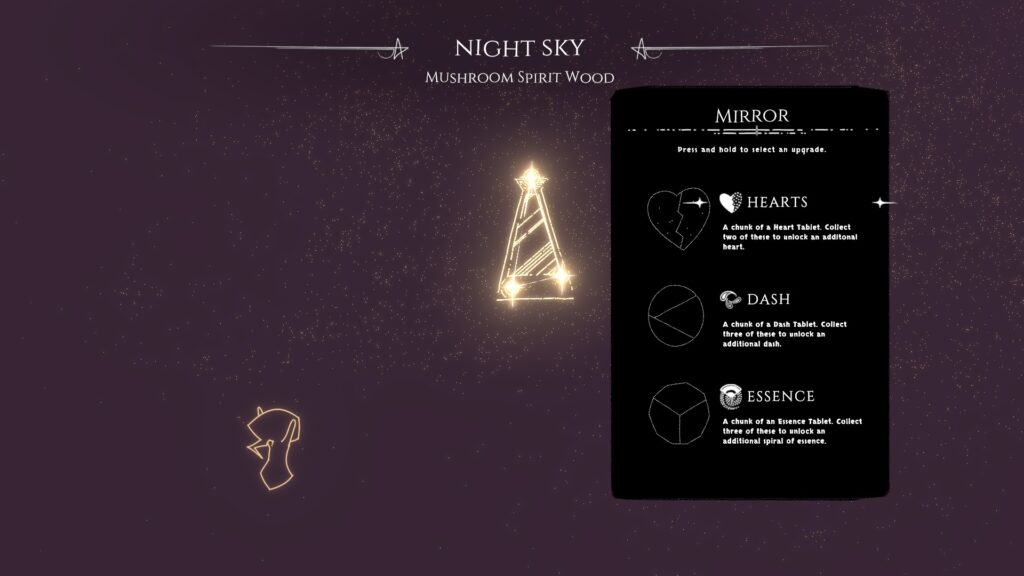




No Comments